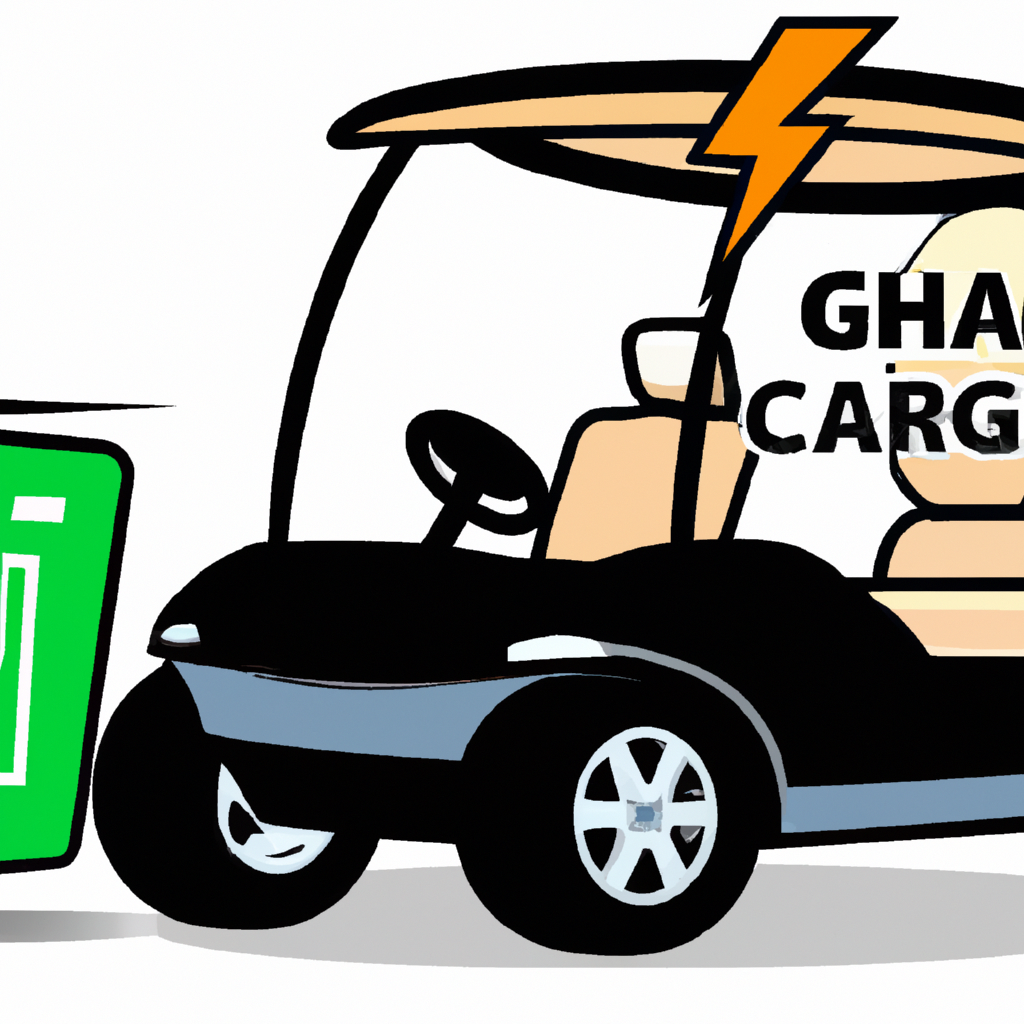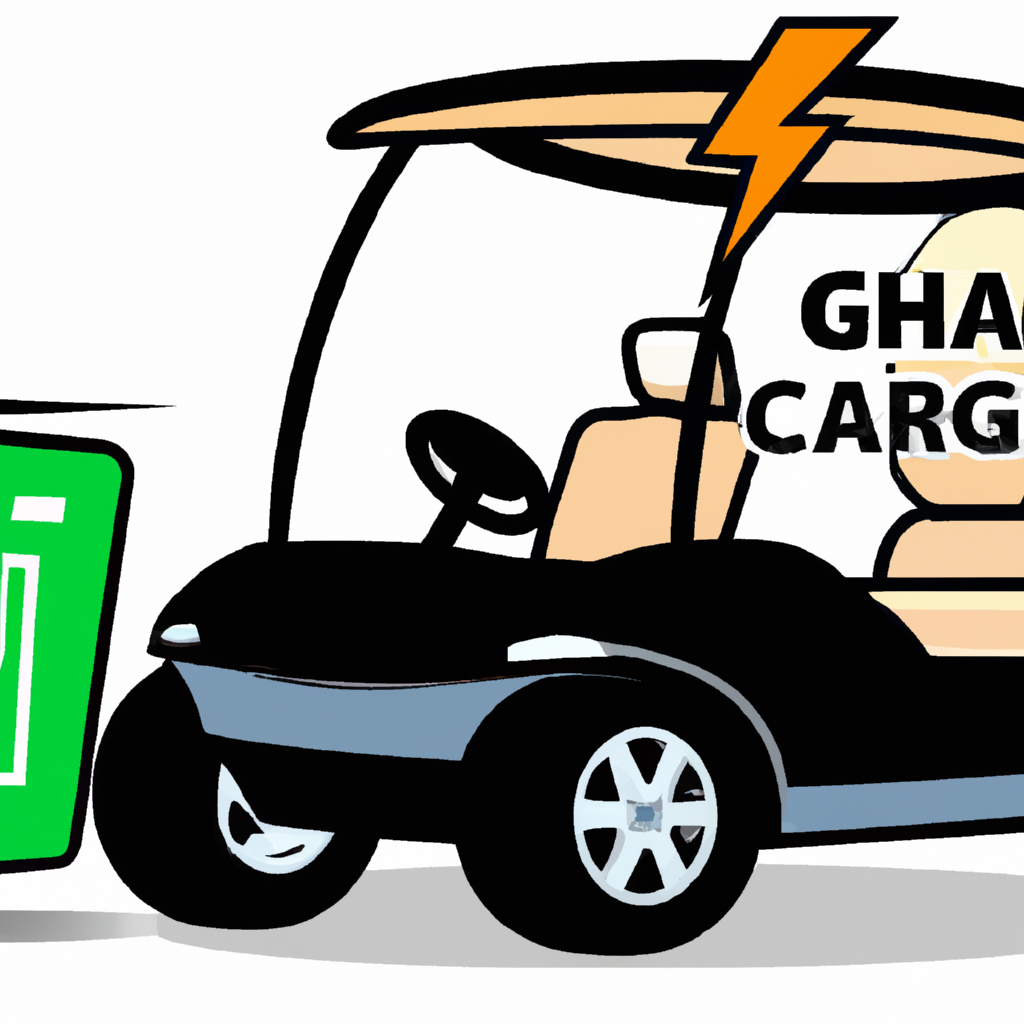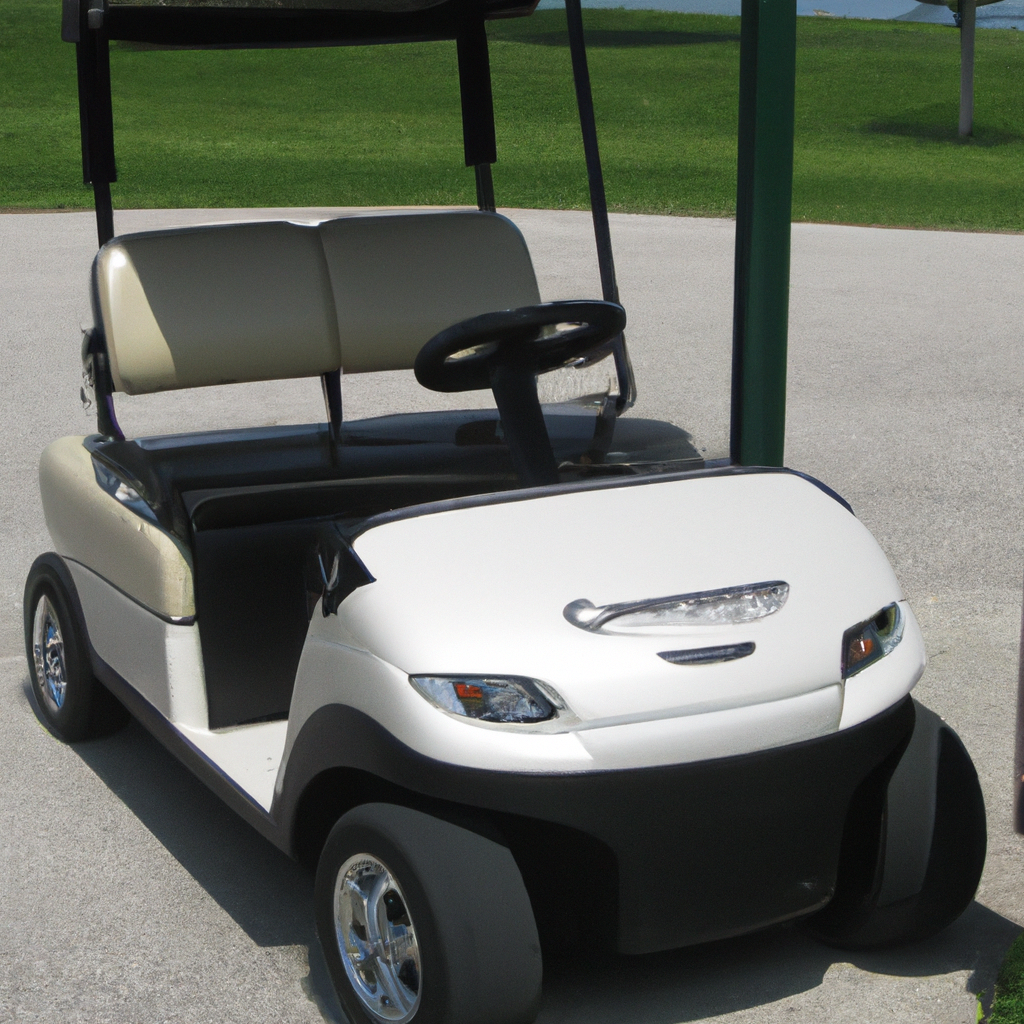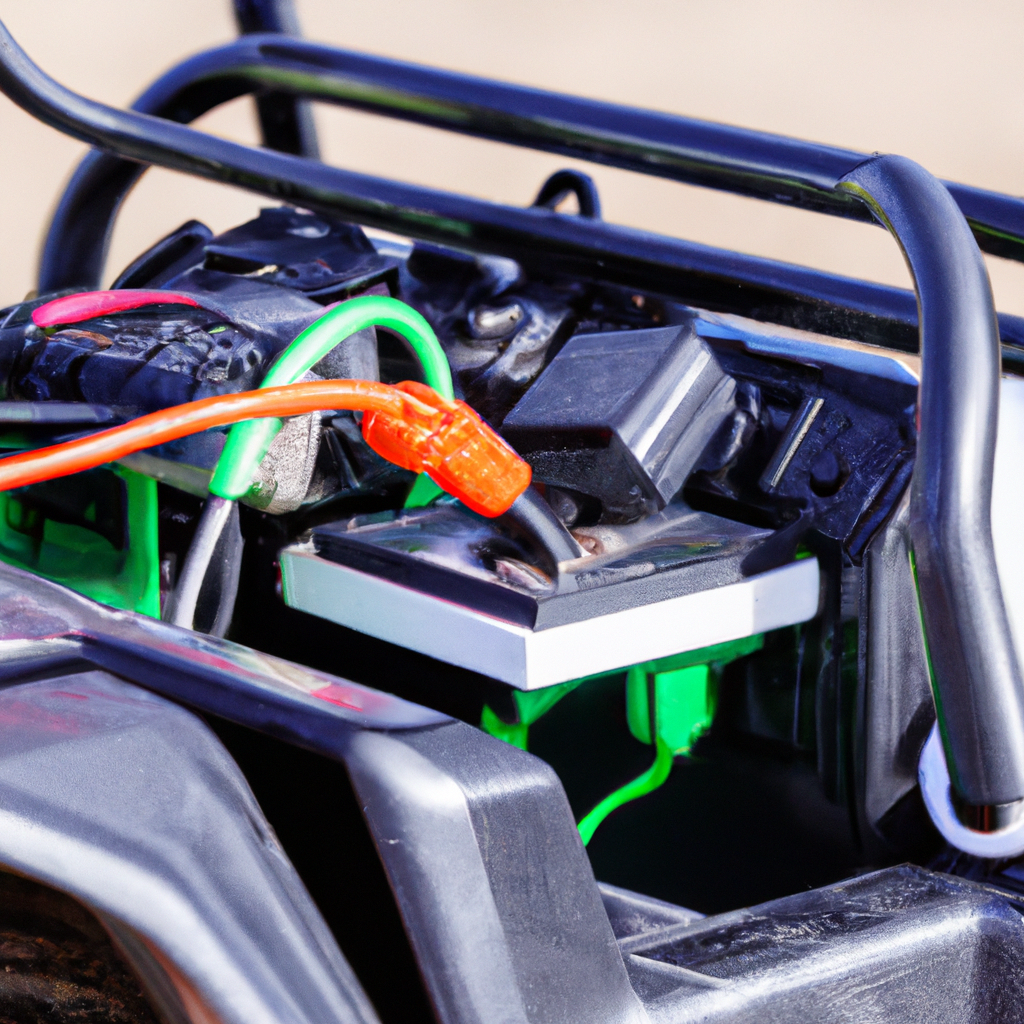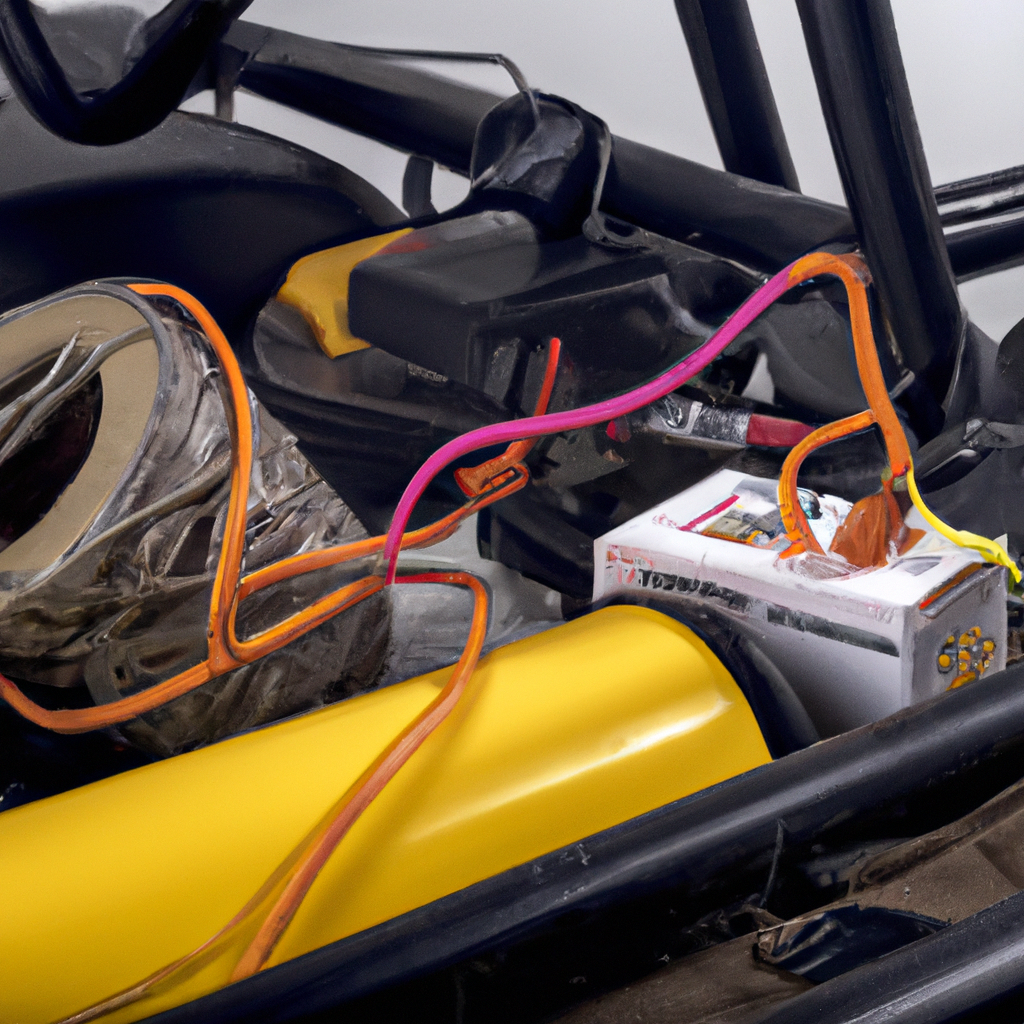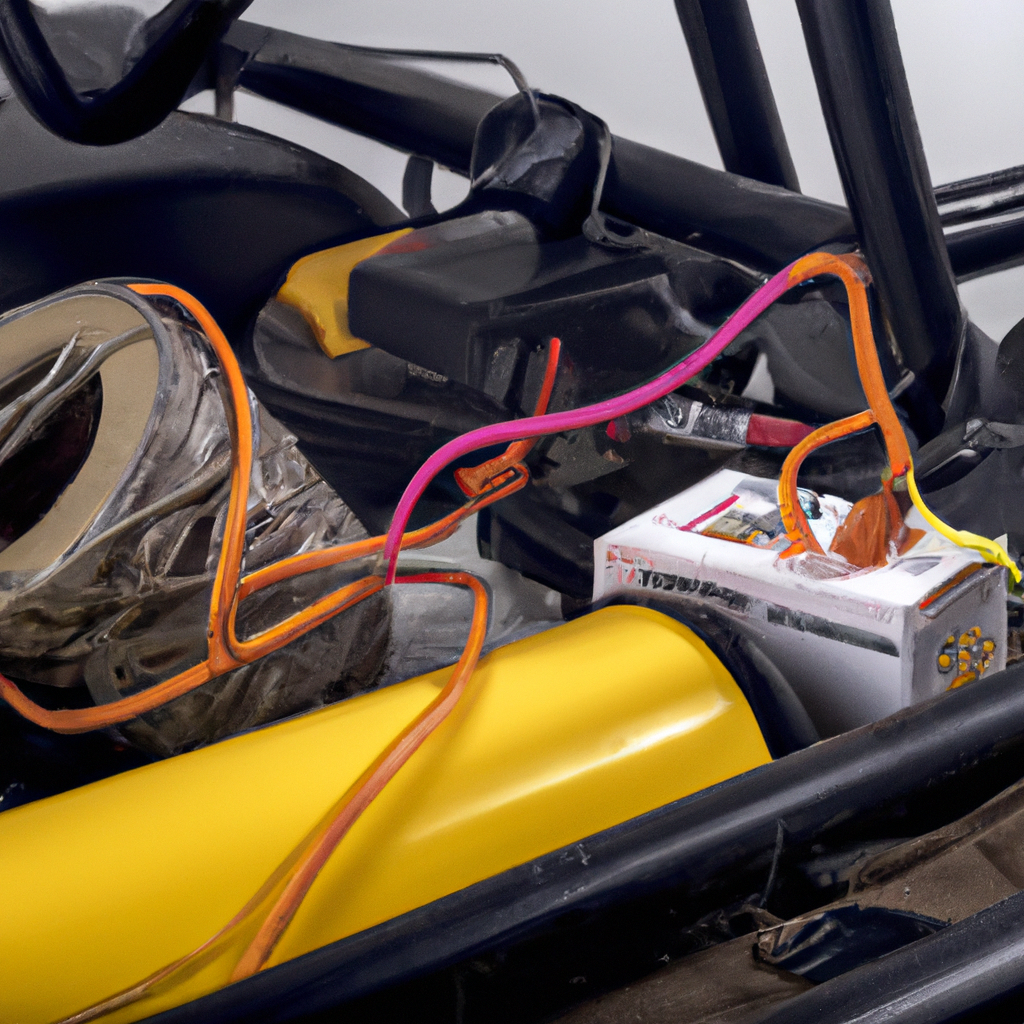Charging your electric golf cart may seem like a straightforward task, but there are a few key factors to consider to ensure optimal performance and longevity. In this comprehensive guide, we will walk you through the essential steps of charging your electric golf cart, from understanding the charging system to best practices for battery maintenance. Whether you are a seasoned golf cart owner or new to the world of electric vehicles, this guide is packed with valuable tips and insights to help you keep your golf cart running smoothly and efficiently. So grab your charger and get ready to become an expert in charging your electric golf cart!

1. Understanding Electric Golf Cart Batteries
Electric golf carts are powered by rechargeable batteries specifically designed for their use. Understanding the different types of batteries used, their voltage and capacity, as well as proper maintenance and safety precautions, is essential for maximizing the performance and lifespan of your electric golf cart.
1.1 Types of Batteries Used in Electric Golf Carts
Electric golf carts typically use deep cycle lead-acid batteries, specifically designed to provide a steady and consistent flow of power over an extended period. These batteries come in two main types: flooded lead-acid batteries and sealed lead-acid batteries. Flooded lead-acid batteries require regular maintenance, such as checking and adding distilled water, while sealed lead-acid batteries are maintenance-free.
1.2 Voltage and Capacity of the Batteries
The voltage and capacity of the batteries used in electric golf carts vary depending on the specific model and manufacturer. Most electric golf carts operate on a 36-volt or 48-volt system, with battery capacities ranging from 200 to 400 amp-hours. It is important to consult the owner’s manual or contact the manufacturer to determine the appropriate voltage and capacity for your golf cart.
1.3 Battery Maintenance and Safety Precautions
Proper maintenance of electric golf cart batteries is crucial to ensure optimal performance and extend their lifespan. Regularly check the battery water levels and top them up with distilled water if necessary (for flooded lead-acid batteries). Keep the batteries clean and free from corrosion by using a mixture of baking soda and water. It is important to handle batteries with care, wearing protective gloves and goggles, and follow safety precautions provided by the manufacturer to minimize the risk of accidents or injury.
2. Preparing for the Charging Process
Before charging your electric golf cart, you need to ensure that you have the right charger, locate the charging port on your golf cart, inspect the charging cables, create a safe charging environment, and check the battery charge level.
2.1 Choosing the Right Charger
Selecting the appropriate charger for your electric golf cart is essential for its safe and efficient charging. Consult the owner’s manual or contact the manufacturer to determine the compatible charger specifications. Make sure the charger has the correct voltage and amperage ratings to match your golf cart’s battery system.
2.2 Locating the Charging Port
The charging port of your electric golf cart is typically located in the front or rear of the cart. Consult the owner’s manual or inspect the exterior of your golf cart to find the charging port. Ensure that the charging port is easily accessible and free from any obstructions.
2.3 Inspecting the Charging Cables
Before connecting the charger, inspect the charging cables for any signs of wear or damage. Ensure that the cables are free from cuts, frays, or exposed wires. Damaged cables can lead to safety hazards or ineffective charging. If you notice any issues with the charging cables, replace them before proceeding with the charging process.
2.4 Ensuring a Safe Charging Environment
It is important to create a safe charging environment for your electric golf cart. Find a well-ventilated area that is free from flammable materials and away from open flames or heat sources. Avoid charging the cart in direct sunlight or extreme temperatures, as it can affect the charging process and potentially damage the batteries.
2.5 Checking the Battery Charge Level
Before initiating the charging process, check the battery charge level to determine how much charge is remaining. This will help you determine the estimated charging time required to fully recharge the batteries. Most electric golf carts have a battery charge indicator, such as a gauge or digital display, to provide information about the battery charge level.
3. Step-by-Step Guide to Charging an Electric Golf Cart
Now that you have prepared for the charging process, follow this step-by-step guide to effectively and safely charge your electric golf cart.
3.1 Connecting the Charger to the Cart
Begin by connecting the charger to your electric golf cart. Take the charging cables and plug them into the appropriate charging port on your golf cart. Ensure that the cables are firmly connected and that there are no loose connections or exposed wires.
3.2 Plugging in the Charger
After connecting the charger to your golf cart, plug the charger’s power cord into a nearby electrical outlet. Make sure the outlet is in good condition and properly grounded. Avoid using extension cords if possible, as they can reduce the efficiency of the charging process.
3.3 Monitoring the Charging Process
Once the charger is plugged in, it will begin supplying power to the batteries. Monitor the charging process by observing the charger’s indicator lights or display. These indicators usually show the charging status, such as power on, charging in progress, or charging complete. Avoid leaving the charging process unattended and periodically check the charger and batteries for any unusual signs or issues.
3.4 Charging Time and Factors Affecting it
The charging time required to fully recharge the batteries of an electric golf cart can vary depending on several factors. The capacity of the batteries, the level of discharge, the charger’s amperage rating, and the overall condition of the batteries can all influence the charging time. It is recommended to refer to the manufacturer’s guidelines for estimated charging times or consult the owner’s manual for your specific golf cart model.
3.5 Disconnecting the Charger
Once the batteries are fully charged, it is important to disconnect the charger to prevent overcharging. Unplug the charger’s power cord from the electrical outlet first, and then disconnect the charging cables from the golf cart’s charging port. Properly coil the charging cables and store them in a safe place until the next charging cycle.

4. Maintaining and Extending Battery Life
To ensure the long-term performance and lifespan of your electric golf cart batteries, it is crucial to practice proper maintenance and take necessary precautions.
4.1 Storing Batteries Properly
If you plan to store your electric golf cart or batteries for an extended period, it is important to follow proper storage procedures. Clean the batteries thoroughly, ensure they are fully charged, and disconnect them from the golf cart. Store the batteries in a cool, dry place and periodically check their charge levels to avoid deep discharge or excessive self-discharge.
4.2 Charging Frequency and Depth of Discharge
Regularly charging your electric golf cart batteries is essential to maintain their capacity and prolong their lifespan. Avoid deep discharge, where the batteries are significantly discharged before charging. Instead, aim for shallow discharge cycles where the batteries are recharged after each use. This will help optimize their performance and prevent capacity degradation.
4.3 Avoiding Overcharging and Undercharging
Overcharging or undercharging your electric golf cart batteries can lead to reduced performance and a shorter lifespan. Follow the manufacturer’s recommendations regarding the appropriate charging time and avoid leaving the batteries connected to the charger for an extended period. Similarly, ensure that the batteries are sufficiently charged before each use to prevent undercharging.
4.4 Cleaning and Inspecting Batteries
Regularly clean and inspect your electric golf cart batteries to keep them in good condition. Clean the battery terminals and connections using a mixture of baking soda and water to remove any corrosion. Inspect the batteries for any signs of damage, leakage, or bulging. If you notice any issues, consult a professional or contact the manufacturer for appropriate guidance.
4.5 Replacing Faulty Batteries
Over time, electric golf cart batteries may deteriorate or fail to hold a charge effectively. If you notice a significant decrease in their performance or if they are unable to provide adequate power for your golf cart, it may be necessary to replace them. Consult the owner’s manual or contact the manufacturer for guidance on replacing faulty batteries.
5. Troubleshooting Common Charging Issues
Sometimes, despite following the proper charging procedures, you may encounter various charging issues with your electric golf cart. Here are some common problems you may face and possible solutions.
5.1 Cart Not Charging
If your electric golf cart is not charging, there could be several potential causes. Ensure that the charger is properly connected to the golf cart and the electrical outlet. Check the charging cables for any damage or loose connections. If the issue persists, consult a professional or contact the manufacturer for further troubleshooting or assistance.
5.2 Slow Charging
Slow charging can occur if the charger’s amperage rating is lower than the recommended specifications for your golf cart batteries. Verify that you are using a charger with the correct voltage and amperage ratings. Additionally, check the charging cables and connections for any loose or damaged parts that may impede the charging process.
5.3 Charger Not Working
If your charger is not working at all, ensure that it is receiving power by checking the electrical outlet or trying a different outlet. Inspect the charger’s power cord and plug for any damage or loose connections. If the charger still does not work, it may be faulty and require repair or replacement. Contact the manufacturer or a professional to diagnose and resolve the issue.
5.4 Battery Overheating
Battery overheating during the charging process can be dangerous and lead to performance issues or damage. If you notice excessive heat from your electric golf cart batteries, immediately disconnect the charger and allow the batteries to cool down. Inspect the batteries for any signs of damage or leakage, and if necessary, seek professional assistance to diagnose and address the issue.
5.5 Charging Interruptions
If your charging process is frequently interrupted or automatically stops, it may indicate underlying issues with the charger, batteries, or electrical connections. Check for loose or damaged charging cables or connections. If the interruptions persist, consult a professional to assess and resolve the problem.
6. Safety Precautions and Best Practices
When dealing with electric golf cart batteries and the charging process, it is important to prioritize safety and follow best practices to prevent accidents or injuries.
6.1 Disconnecting Power Before Maintenance
Before performing any maintenance or inspection tasks on your golf cart batteries, ensure that the power is disconnected. This includes both disconnecting the charger from the electrical outlet and disconnecting the charging cables from the golf cart’s charging port. By disconnecting the power, you reduce the risk of electric shocks or short circuits.
6.2 Using Personal Protective Equipment
When handling electric golf cart batteries or engaging in the charging process, wear appropriate personal protective equipment (PPE). This includes gloves, goggles, and protective clothing. PPE helps protect against chemical exposure, acid spills, and potential injuries. Always prioritize your safety by using PPE.
6.3 Charging in a Well-Ventilated Area
Always charge your electric golf cart batteries in a well-ventilated area. Charging batteries can release hydrogen gas, which is highly flammable. Adequate ventilation helps disperse any released gas and minimizes the risk of ignition or explosions. Avoid charging in enclosed spaces or areas with poor ventilation.
6.4 Avoiding Water Exposure
Electric golf cart batteries are sensitive to water exposure, which can lead to damage or reduced performance. Avoid exposing the batteries to excessive moisture or immersion in water. Keep the charging area dry and ensure that the batteries are securely covered to prevent water entry during usage or storage.
6.5 Adhering to Manufacturer’s Instructions
The manufacturer’s instructions and guidelines are essential for proper battery maintenance, charging, and overall safety. Always refer to the owner’s manual or consult the manufacturer’s recommendations before performing any tasks related to your electric golf cart batteries. These instructions provide valuable information specific to your golf cart model and help ensure you follow the correct procedures.
7. Environmental Considerations
Electric golf carts offer several environmental benefits compared to their gasoline-powered counterparts. By incorporating eco-friendly practices and considering environmental factors, you can further enhance the sustainability of your electric golf cart usage.
7.1 Recycling and Disposing of Batteries
When it is time to replace your electric golf cart batteries, it is important to dispose of them properly. Lead-acid batteries should be recycled to mitigate environmental impact and recover valuable materials. Contact local recycling centers or battery retailers to find out how to dispose of your old batteries safely and responsibly.
7.2 Opting for Renewable Energy Sources
Consider utilizing renewable energy sources to power your electric golf cart. Solar panels, for example, can provide clean and sustainable energy for charging the batteries. By reducing reliance on fossil fuel-generated electricity, you can further minimize your environmental footprint and contribute to a greener future.
7.3 Minimizing Energy Consumption
To reduce energy consumption, make sure to turn off the golf cart and disconnect the batteries when not in use. Utilize energy-efficient features, such as LED lights or low-power mode, when available. By minimizing energy usage, you can maximize the battery life and contribute to energy conservation efforts.
7.4 Promoting Eco-Friendly Practices
Encourage and practice eco-friendly practices while using your electric golf cart. Carpooling with fellow golfers or using electric golf carts for short distances instead of larger vehicles can help reduce carbon emissions. By promoting sustainability within your golfing community, you can contribute to a cleaner and healthier environment.
8. Benefits of Electric Golf Carts
Electric golf carts offer numerous advantages over traditional gasoline-powered ones. Understanding these benefits can help you make an informed decision when purchasing or using an electric golf cart.
8.1 Cost Savings
Electric golf carts are more cost-effective to operate and maintain compared to their gasoline counterparts. The cost of electricity is generally lower than the cost of gasoline, resulting in reduced operational expenses. Electric golf carts also require less frequent maintenance, as they have fewer moving parts and do not require oil changes or regular engine tune-ups.
8.2 Eco-Friendly Operation
By using an electric golf cart, you contribute to reducing air pollution and greenhouse gas emissions. Electric golf carts produce zero tailpipe emissions, significantly reducing carbon footprints and environmental impact. This eco-friendly operation aligns with sustainable practices and helps preserve the natural beauty of golf courses.
8.3 Quieter and Smoother Ride
Compared to gasoline-powered golf carts, electric models offer a quieter and smoother ride. The absence of engine noise and vibrations creates a more enjoyable and serene golfing experience. Electric golf carts provide a quieter mode of transportation, reducing noise pollution and maintaining peaceful surroundings for other golfers.
8.4 Low Maintenance Requirements
Electric golf carts have relatively low maintenance requirements due to their simplified design and fewer mechanical components. They do not require frequent oil changes, air filter replacements, or spark plug inspections. Routine maintenance tasks primarily involve checking the batteries, cables, and general cleaning. This translates to lower maintenance costs and less time spent on upkeep.
8.5 Customization Options
Electric golf carts offer a wide range of customization options to suit individual preferences and needs. From choosing the color and design to adding accessories such as stereo systems, coolers, or golf bag holders, you can customize your electric golf cart to reflect your personality and enhance your golfing experience.
9. Conclusion
Charging an electric golf cart requires proper understanding, preparation, and adherence to safety guidelines. By familiarizing yourself with the types of batteries used, understanding the charging process, and practicing regular maintenance, you can maximize the performance and lifespan of your electric golf cart batteries.
Remember to always prioritize safety, wear the appropriate personal protective equipment, and follow the manufacturer’s instructions. Consider eco-friendly practices, such as recycling batteries and utilizing renewable energy sources, to further enhance the sustainability of your electric golf cart usage.
With their cost savings, eco-friendly operation, and various benefits, electric golf carts continue to grow in popularity among golfers. By embracing these efficient and environmentally-friendly alternatives, you can enjoy a quieter, smoother ride while minimizing your impact on the environment.

